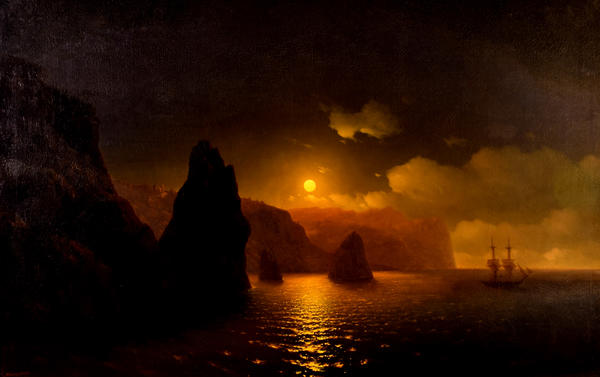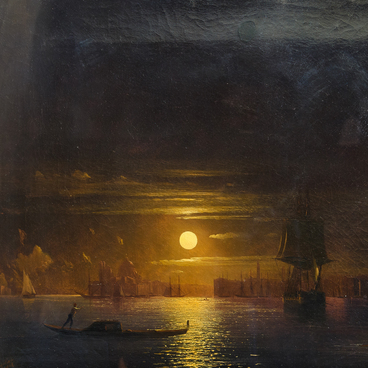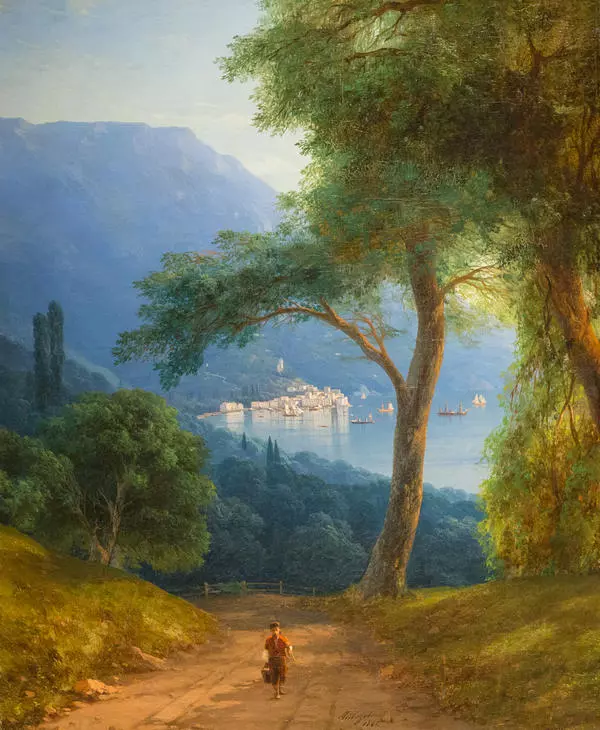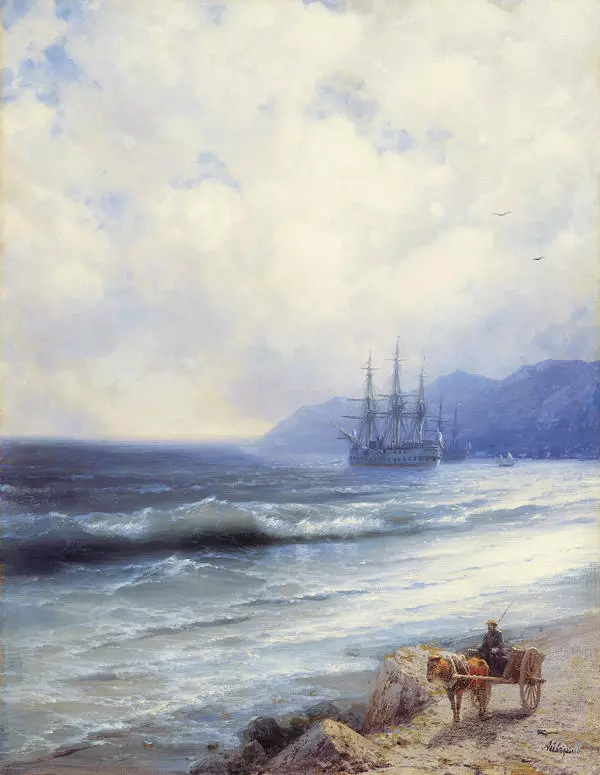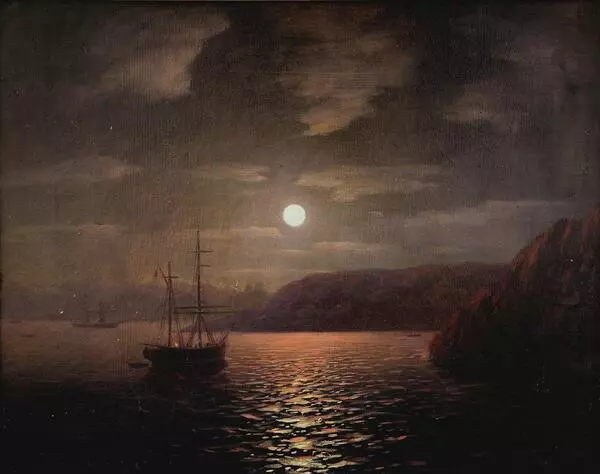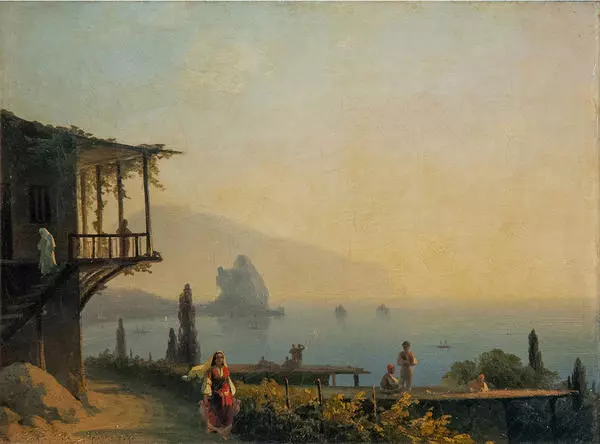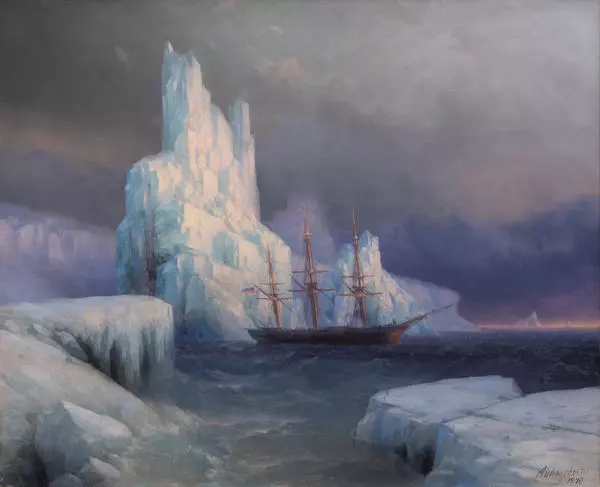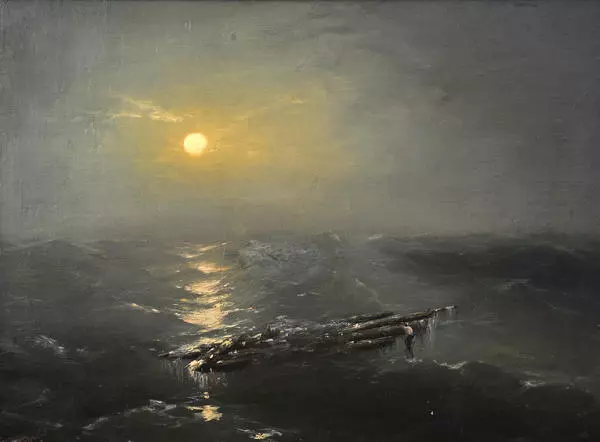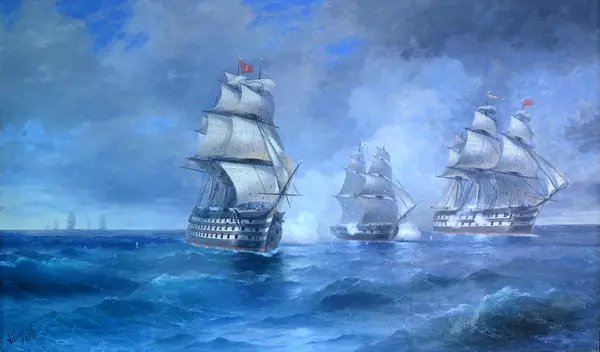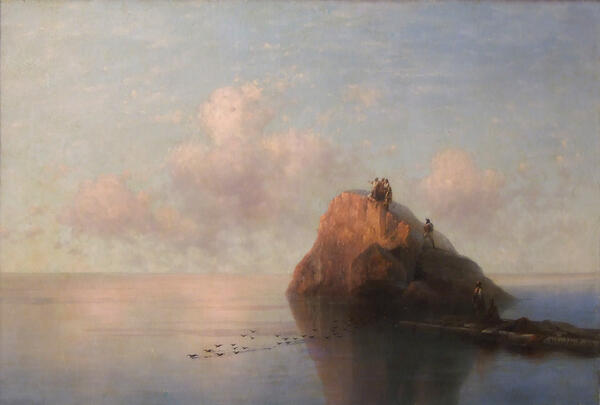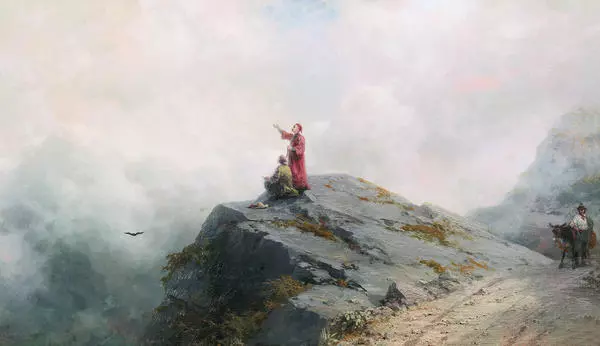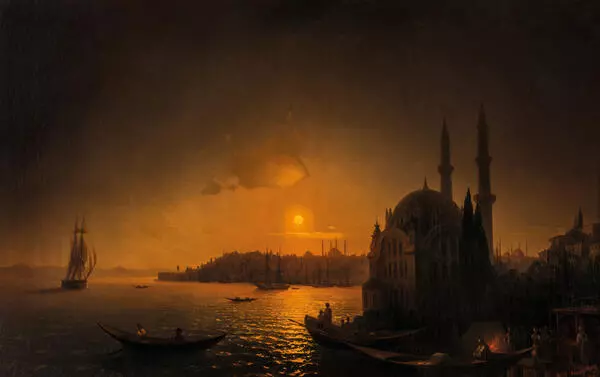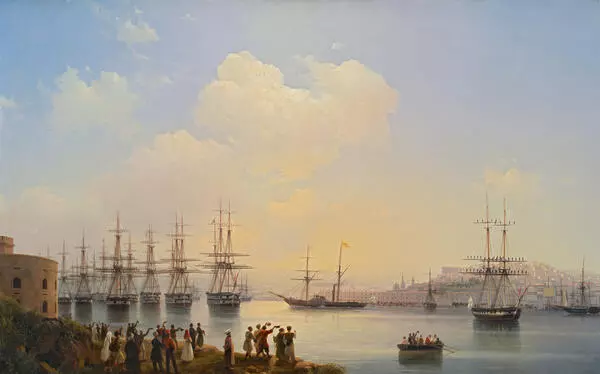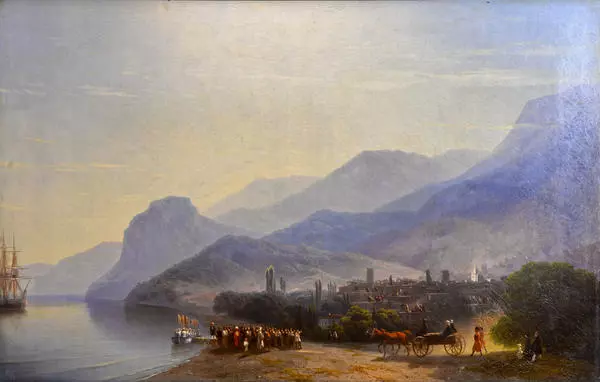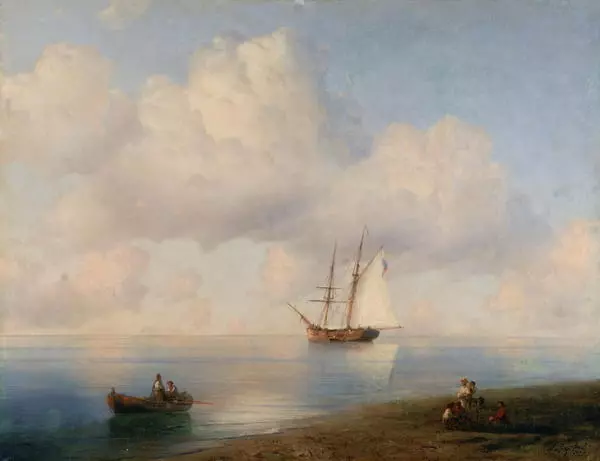The beginning of the 1840s was a very fruitful period for Ivan Aivazovsky. Having graduated from the Arts Academy he went to master his art in Europe where he was warmly welcomed by the artistic circles and earned international fame. ‘Rome, Naples, Venice, Paris, London, and Amsterdam honoured me with flattering encouragement, and I couldn’t but inwardly take pride in my success in foreign lands anticipating sympathetic reception in my home land’, — the artist wrote.
In St. Petersburg, Aivazovsky was in for more success. He was awarded the rank of an academician and appointed Artist of the Navy General Staff. Hardly had the young artist had time for any respite after his long travels when he began getting dozens of commissions the most important of which was a commission from the government to depict views of the Baltic ports and coastal cities. During that period of Russian history, marine painting enjoyed special popularity. Aivazovsky’s marinas decorated estate mansions of Count Stroganov, Prince Gagarin and other nobility, the Emperor showed keen interest in his art.
In 1845, Aivazovsky left for Feodosia to stay there forever. The St. George’s Monastery was painted in that same year. The artist depicted serene nature. Full moon is rising over the mountain illuminating light clouds and slightly rippling water. The picture must have been inspired by Aivazovsky’s trip to Sebastopol which he called “one of the best places in Europe”. According to the legend, the history of the monastery appearing in that place began during the night when wrecked Greek seafarers noticed a light on the shore. That light of hope was the icon of Saint George found there in 891. The atmosphere of the place made an indelible impression on Aivazovsky.
A few years later, the artist once again turned to his reminiscences of St. George’s Monastery — there is a drawing of the same title depicting a monastery courtyard dated 1858. In the painting, Aivazovsky showed the monastery from the seaside and in the drawing he gives a top view. The St. George’s Monastery canvas is imbued with lyricism, nothing seems to be able to disturb the serenity of a warm southern night. Aivazovsky highlights the glittering moon glade, which takes up the better part of the composition, and puts a three-masted boat on the borderline of light and darkness.

